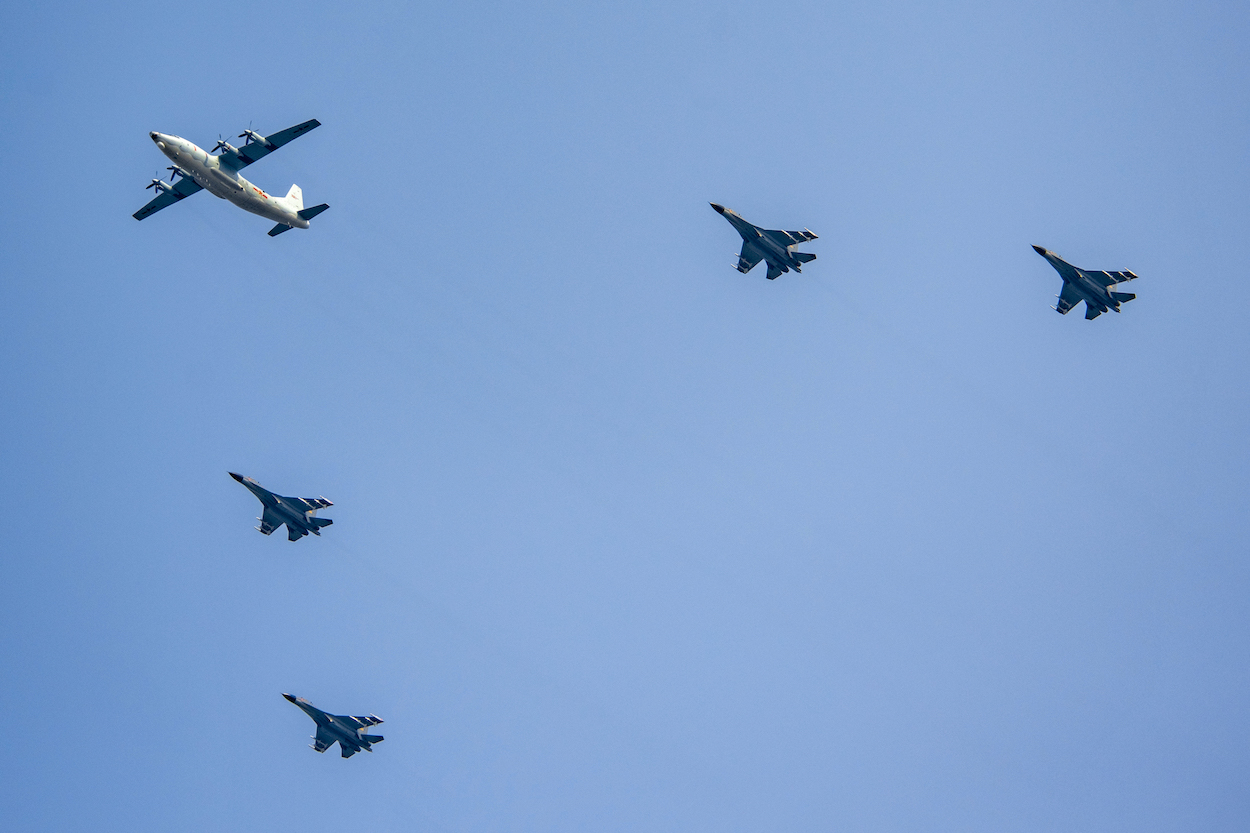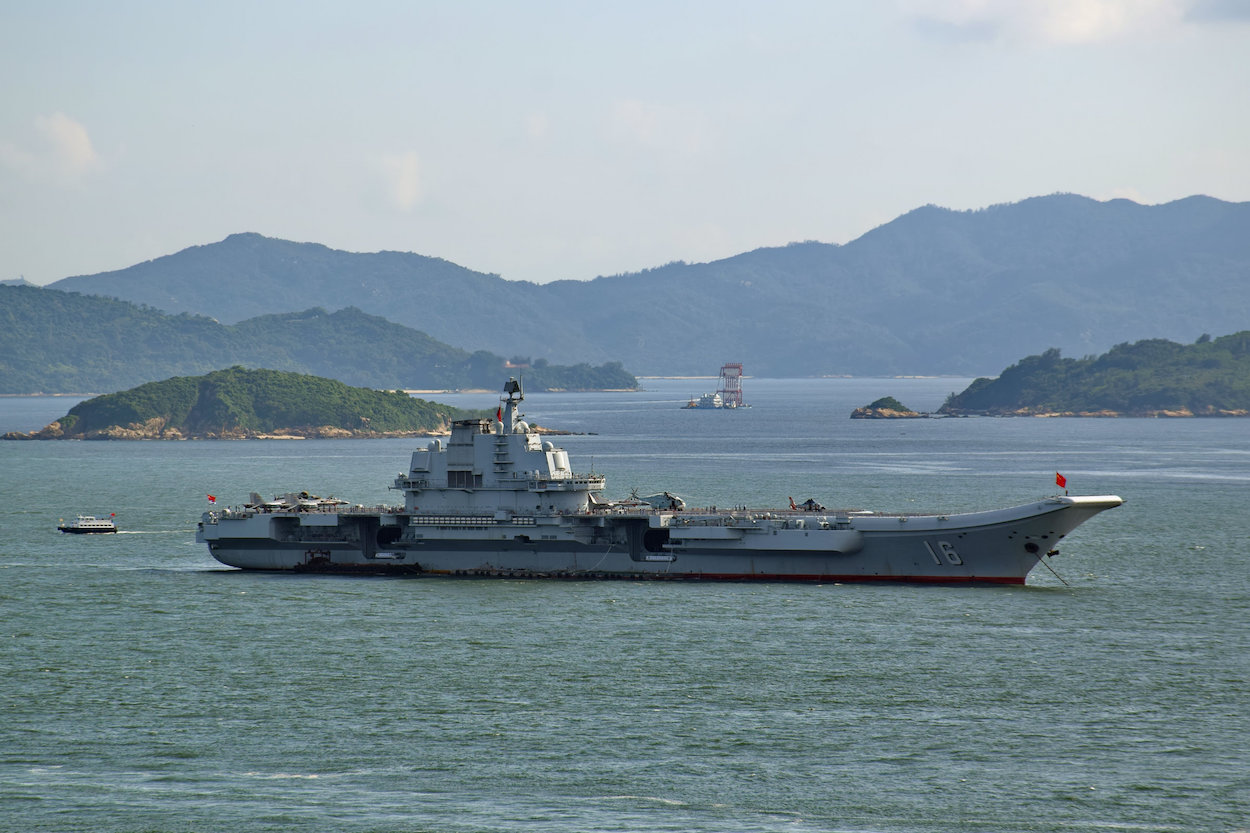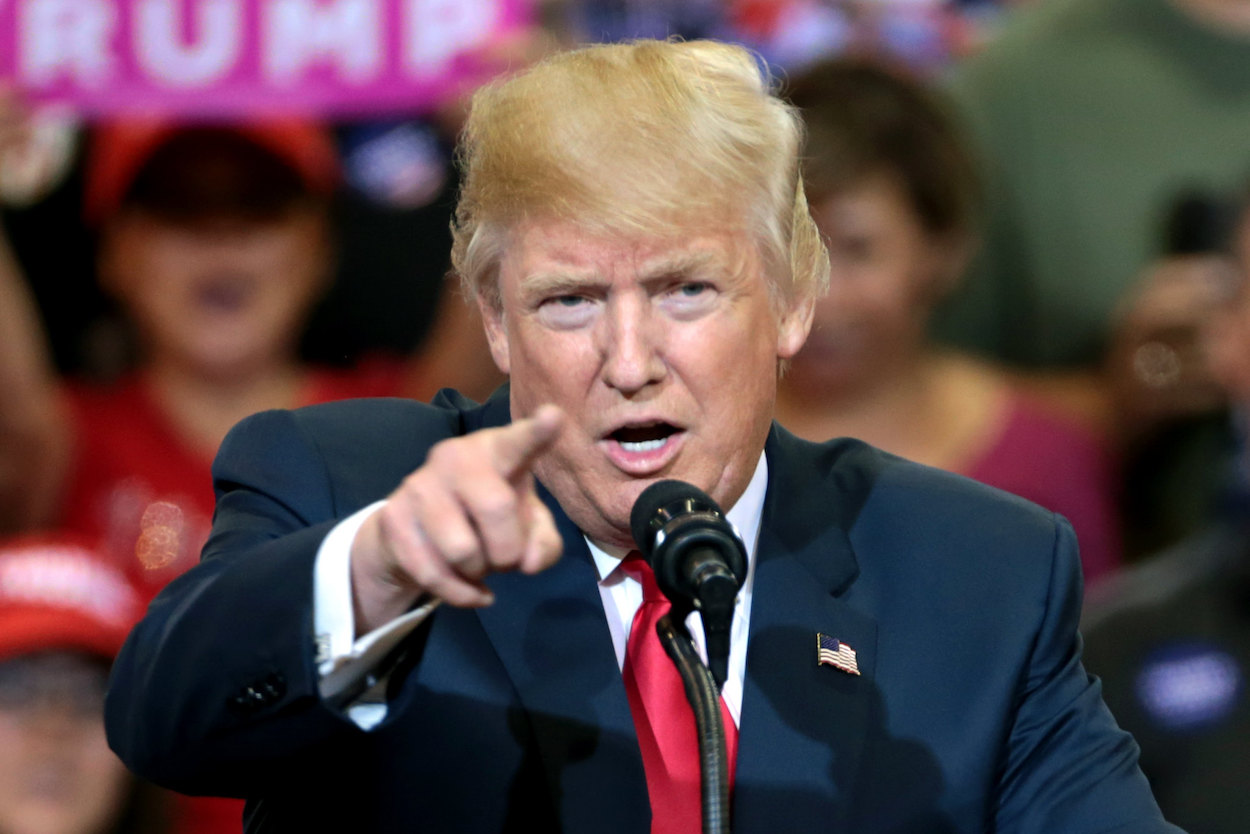by Brian Hioe
語言:
English
Photo Credit: Public Domain
IN THE PAST three months, one has observed an increase in Chinese and American military activity in the area around Taiwan. Namely, one has observed a sharp uptick in Chinese military activity around Taiwan in the course of the COVID-19 pandemic, and American military activity has primarily been in response to Chinese military activity.
Heightened Chinese military activity in the region can be traced back to February. China flew military aircraft two days in a row in airspace near Taiwan on February 9th and February 10th. It is rare for China to deploy military aircraft in airspace near Taiwan for two days in a row, prompting two consecutive days in which the Taiwanese military scrambled aircraft in response.
 Chinese warplanes. Photo credit: N509FZ/WikiCommons/CC
Chinese warplanes. Photo credit: N509FZ/WikiCommons/CC
In response, the American military deployed aircraft in airspace near Taiwan on February 13th and February 14th. The US also sent a missile cruiser through the Taiwan Strait on February 15th.
China deployed bombers near Taiwanese airspace again on February 28th, before the planes entered the Bashi Strait, during which a Chinese warplane locked onto a Taiwanese one. China military aircraft were again sighted near Taiwan at night on March 16th, the first time that the Chinese military had sent aircraft near Taiwan at night.
Subsequently, in the last half of March, there was a spike in activity by American military aircraft near Taiwan, with American military aircraft believed to be monitoring Chinese activity. American military aircraft were sighted near Taiwan on March 25th, March 26th, March 27th, and March 30th and an American destroyer also transited through the Taiwan Strait on March 25th.
Earlier this month, Chinese planes were spotted near Taiwan on April 8th and April 10th, with American planes deploying later in the day on April 8th and April 10th after Chinese planes were spotted. When an American destroyer passed through the Taiwan Strait on April 10th, it was followed by a Chinese frigate.
On April 11th, China’s first aircraft carrier, the Liaoning, sailed through the Taiwan Strait as part of a carrier group, escorted by two destroyers, two frigates, and a supply ship. It is thought that China sending its first aircraft carrier through the Taiwan Strait may have been to draw attention to that American aircraft carriers in the region are under quarantine. An American destroyer also transited through the Taiwan Strait on April 11th, and American reconnaissance aircraft passed near Taiwan. An American reconnaissance plane was again sighted near Taiwan on April 17th.
 The Liaoning. Photo credit: Baycrest/WikiCommons/CC
The Liaoning. Photo credit: Baycrest/WikiCommons/CC
Indeed, tit-for-tat escalation between the Chinese and American militaries in the past few months is illustrative of how Taiwan stands to be caught in the fray of great power competition between America and China. However, it is to be questioned as to why the Chinese military has sought to escalate military activity around Taiwan in the midst of the COVID-19 pandemic.
The Tsai administration has been quick to criticize the Chinese government for spending resources on militarily intimidating Taiwan when it should have instead been focusing efforts on fighting the COVID-19 pandemic. Yet it is probable that military drills in February were scheduled ahead of time, before the full scale of COVID-19 pandemic was clear, and were meant as a military show of force in the wake of Tsai’s presidential election victory in January. It proves more significant to note that the Chinese government has continued heightened military activity into March and April.
Some have suggested that the Chinese government was originally hoping to divert criticism away from its domestic mishandling of the COVID-19 pandemic by redirecting attention to Taiwan—redirecting domestic discontent from Chinese citizens and distracting international criticisms of its belated response to the virus outbreak. It is also probable that China was hoping to project strength at a time in which the COVID-19 pandemic seemed to indicate weakness.
Increased American military activity in the region began as a response to increased Chinese military activity, though both sides’ actions have had a mutually escalating effect. The American military is very likely hoping to also avoid coming off as weak in its interactions with the Chinese military, as well as to reassure Taiwan and other American allies in the region of American security commitments at a time in which American president Donald Trump has threatened to break off long-standing security relations.
 American president Donald Trump. Photo credit: Gage Skidmore/WikiCommons/CC
American president Donald Trump. Photo credit: Gage Skidmore/WikiCommons/CC
Yet one notes that some analysts believe that the Trump administration, too, was hoping to increase tensions with China for the sake of upcoming elections. As the COVID-19 pandemic worsens in America, with America now having more reported deaths from COVID-19 than China, it has similarly become necessary for America to project strength rather than weakness. Ironically, if America had managed to ward off COVID-19 from the beginning rather than disastrously mismanaged its response to the virus, America would have been in a good position to come out ahead of China in the US-China trade war.
Escalation in the region seems highly possible as the COVID-19 pandemic continues, then. With America continuing to struggle with attempts to contain the pandemic and questions abound whether China has genuinely managed to flatten the curve of COVID-19 cases or is faking statistics in order to avoid the appearance of weakness, the situation seems unstable. Likewise, it is possible that China will escalate drills in the region around the time of Tsai’s May 20th inauguration, although the public swearing-in ceremony for the inauguration has been canceled as a social distancing measure to prevent the spread of COVID-19.

